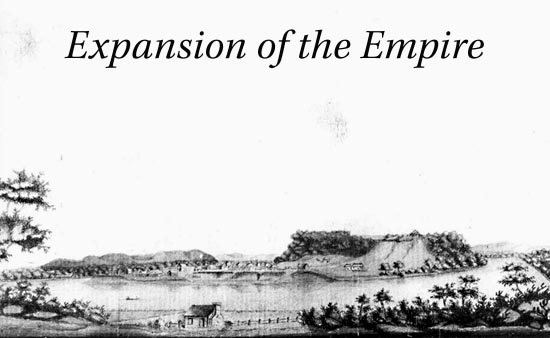

Pittsburgh in 1790
(Courtesy of the The Carnegie Library of Pittsburgh)
|
"The Congress shall have Power to . . . make needful Rules and Regulations respecting the Territory . . . belonging to the United States. New States may be admitted by the Congress." Article IV, Section 3 Leaders of the American
Revolution, such as Benjamin Franklin, John Adams, and George Washington, had been
profoundly influenced by the mid-eighteenth century historical thesis, "Westward the
course of empire takes its way," from Babylonia across the Mediterranean and Europe
to North America. They believed that the United States was destined to become a
vast republican empire, the largest empire ever known. It would include not only
all the land between the Atlantic and the Pacific oceans but also that from the
Arctic Ocean to the Isthmus of Darien (Panama) and the islands of the Caribbean.
By 1789 the United States already spanned the middle of the North American Continent
from the Atlantic to the Mississippi River. In that year Jedidiah Morse justified
publication of his popular American Geography on the premise that "we cannot but
anticipate the period, as not far distant, when the AMERICAN EMPIRE will comprehend
millions of souls, west of the Mississippi." Not all Americans thought settlement
of the West would, or should, come rapidly. With the public divided on the issue,
the First Congress moved cautiously as it initiated a military and Indian policy,
admitted new states, and sought a method for selling off its vast holdings of virgin land.
|
| Table of Contents |